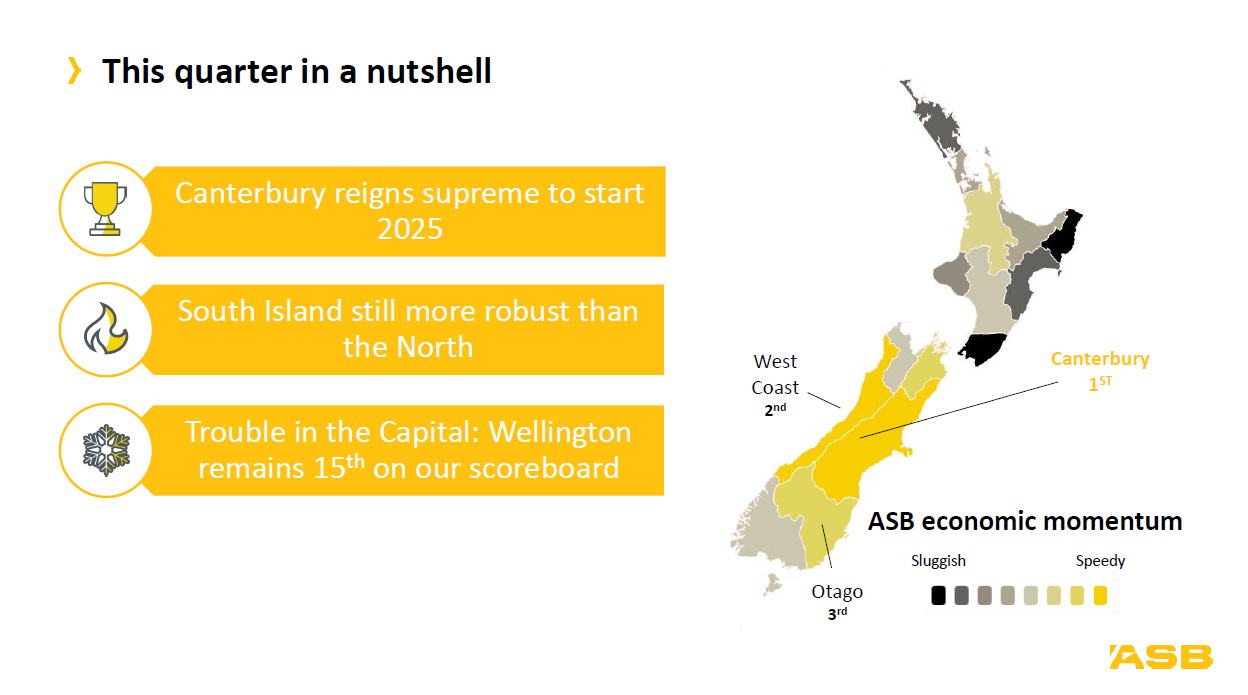Canterbury leads strong South Island performance

Canterbury has taken the top spot on ASB’s Regional Economic Scoreboard for Q1 2025, buoyed by a broad-based recovery across retail, housing, and consumer confidence.
The region is part of a powerful rural-led resurgence that has pushed four South Island regions into the scoreboard’s top four: Canterbury, West Coast, Otago, and Marlborough.
“The scoreboard is reflecting what many in the regions already know – rural New Zealand is doing the heavy lifting right now,” said ASB chief economist Nick Tuffley (pictured).

Commodity strength drives export growth
Strong commodity prices and surging food and fibre exports have played a central role in the South Island’s economic momentum.
The government is forecasting food and fibre export earnings to grow 12% to $54.6 billion in the year ahead, with Fieldays 2025 putting a national spotlight on the sector.
“South Island regions are benefiting from strong commodity tailwinds and resilient export demand, especially across dairy, meat, forestry and horticulture,” Tuffley said.
Adding to this momentum is a net migration shift south, with the 2023 Census showing 30,000 more people moved to the South Island from the North between 2018 and 2023.
However, national growth expectations have softened – Kiwibank recently cut its 2025 GDP forecast from 1.4% to just 0.9%, warning that New Zealand remains highly exposed to worsening global volatility.
West Coast and Marlborough climb as Otago slips
The West Coast surged into second place, achieving its best result in four years thanks to solid construction activity and a retail rebound.
Marlborough also performed strongly, while Otago slipped to third despite continued strength in Queenstown’s tourism sector.
“We’re seeing the impact of that performance filter through to local economies, particularly in regions like the West Coast, which has posted its best result in four years, and Canterbury, where rural strength is boosting confidence across the board,” Tuffley said.
Urban centres lag behind
While rural regions are thriving, urban centres are underperforming. Auckland ranked 10th, while Wellington remained in 15th place for the third straight quarter.
Slower employment growth, subdued construction, and soft consumer confidence continue to weigh on the capital.
“It’s clear that the rural and urban economies seem to be moving at different speeds across the country,” Tuffley said.
“It’s regional New Zealand, particularly the food and fibre sector, that’s doing the hard work of pulling the national economy forward. Meanwhile, places like Wellington continue to face a range of challenges including employment, construction and consumer confidence.”
OCR cuts may support broader recovery
ASB noted that early signs of recovery are emerging nationwide, supported by the Reserve Bank’s 225 basis points of OCR cuts to date. However, global economic uncertainty continues to cloud the outlook.



